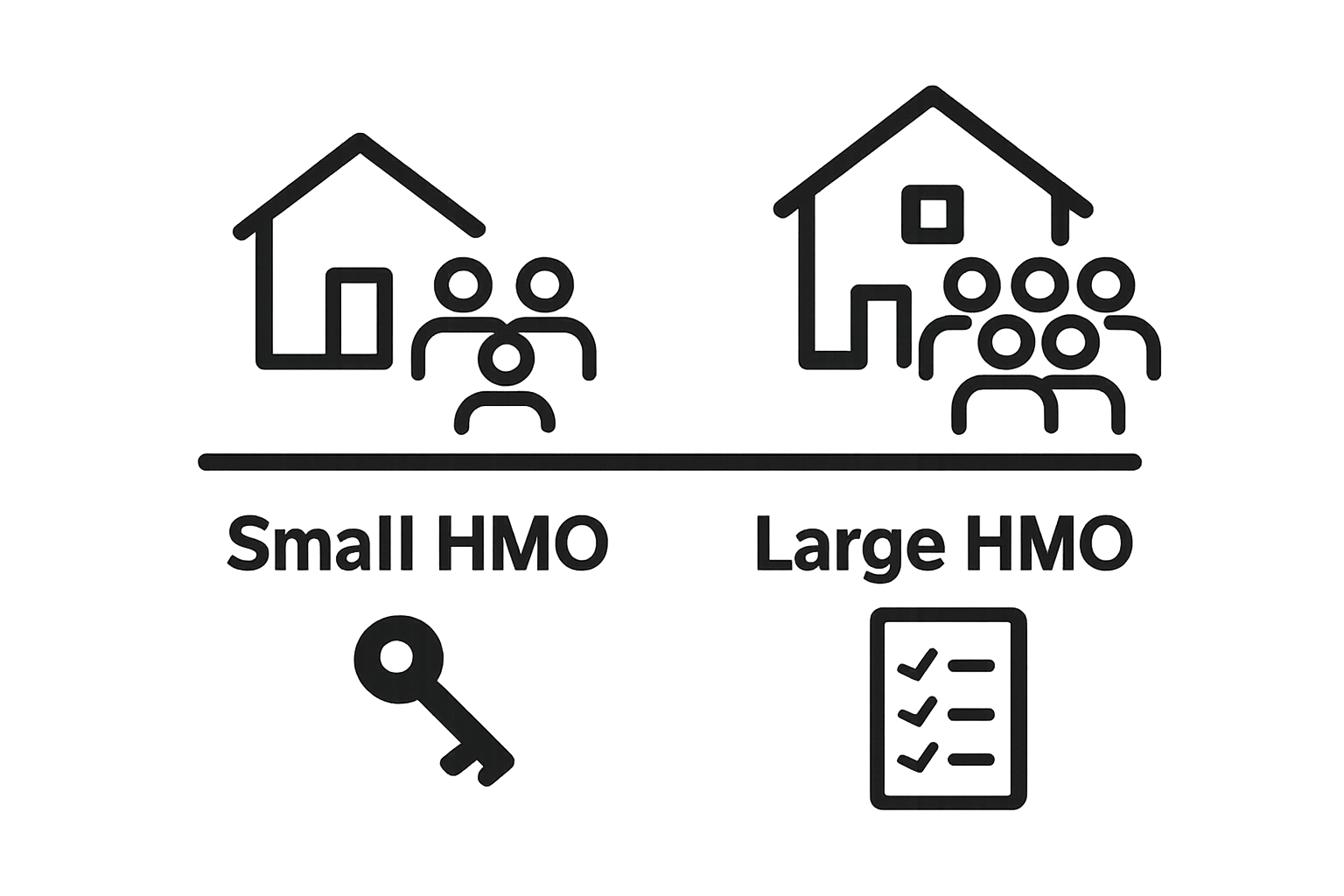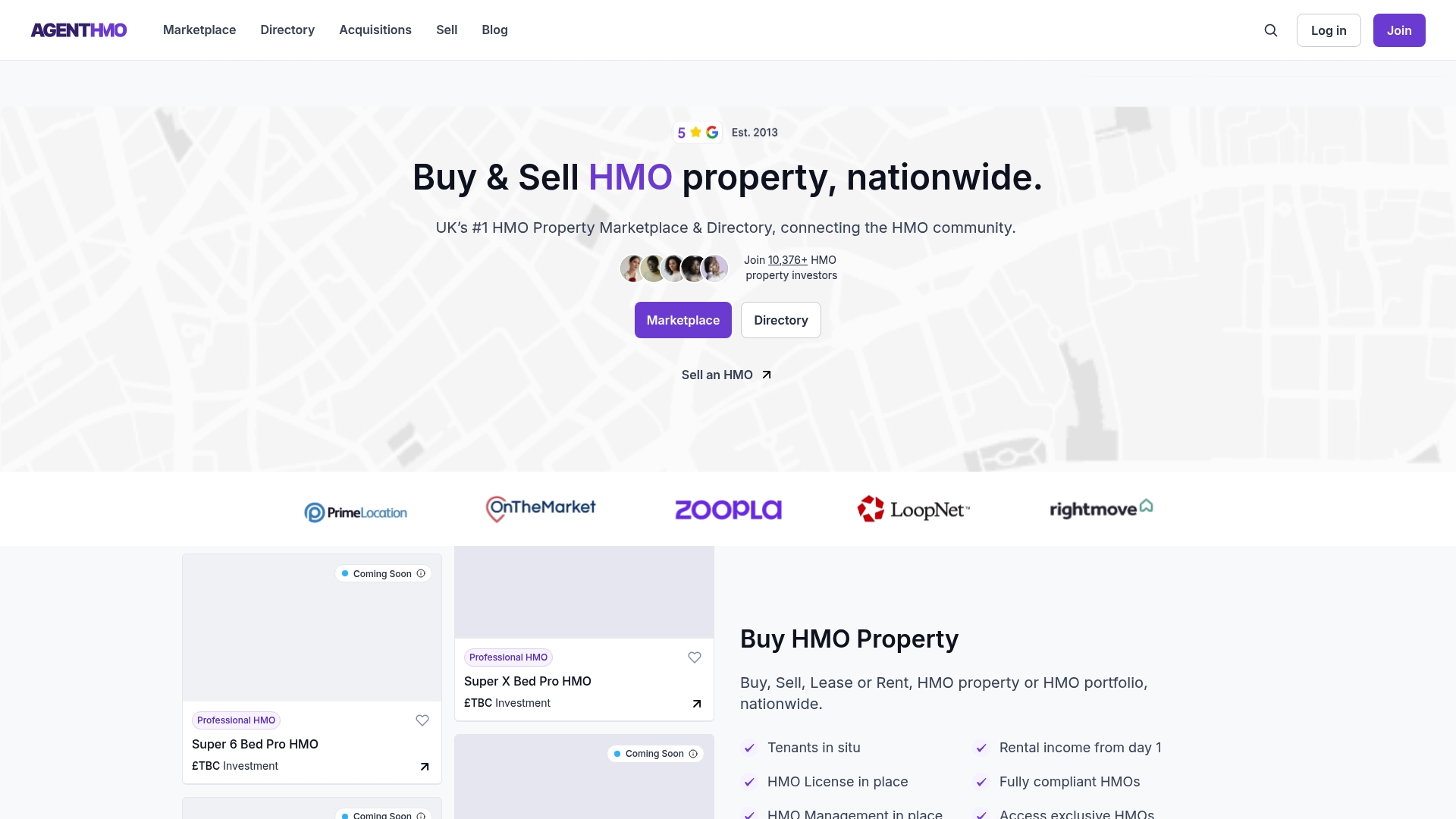HMO properties are a world apart from your average buy-to-let. You might think multi-tenant houses are simply about cramming more people into one building and collecting extra rent. But the true story is far more striking. HMO properties can deliver rental yields up to 3 times higher than standard single-lets in key UK cities, all while demanding deep legal knowledge and smart management just to stay compliant. The surprising twist is that tackling this complex asset class opens the door to a level of financial return and flexibility that most landlords never experience.
Table of Contents
- Defining Hmo Property And Its Characteristics
- The Importance Of Sourcing Hmo Properties
- Key Concepts In Hmo Property Sourcing
- Factors Influencing Hmo Property Market Trends
- Understanding Legal And Regulatory Frameworks
Quick Summary
| Takeaway | Explanation |
|---|---|
| Understand HMO characteristics. | HMO properties house multiple tenants from different households sharing facilities, unique from traditional rentals. |
| Know licensing requirements. | Small HMOs need no license; large HMOs (5+ tenants) require mandatory licensing and compliance with safety laws. |
| Evaluate financial viability. | Assess rental yields, location, and potential for income generation before investing in HMO properties. |
| Monitor market trends. | Economic factors like employment rates and local demographics impact the attractiveness and performance of HMO investments. |
| Prioritise regulatory compliance. | Adhere to safety, health standards, and local regulations to avoid penalties and ensure tenant welfare. |
Defining HMO Property and Its Characteristics
A House in Multiple Occupation (HMO) represents a unique property category that deviates significantly from traditional rental accommodations. According to the UK government’s official definition, an HMO is a residential property where at least three individuals from different households share essential living facilities such as bathrooms, kitchens, or common areas.
Key Characteristics of HMO Properties
HMO properties are distinguished by several critical structural and occupancy features that set them apart from standard residential lettings. These properties typically involve multiple unrelated tenants who occupy individual rooms while sharing communal spaces. Key characteristics include:
- Multiple tenants from different households
- Shared essential facilities like bathrooms and kitchens
- Separate bedroom occupancy with common living areas
- Potential for higher rental yields compared to traditional single-let properties
Legal and Regulatory Framework
The legal classification of an HMO involves specific criteria that landlords must understand. Properties are categorized into small HMOs (3-4 unrelated tenants) and large HMOs (5 or more unrelated tenants). Landlords must obtain specific licensing, meet stringent safety regulations, and ensure proper management of these multi-occupancy dwellings.
Below is a comparison table outlining the differences between small and large HMO properties, focusing on aspects such as tenant numbers, licensing, and regulatory requirements.
| HMO Type | Number of Tenants | Licensing Requirement | Key Regulatory Elements |
|---|---|---|---|
| Small HMO | 3-4 unrelated tenants | Usually not mandatory | Must comply with basic safety and management standards |
| Large HMO | 5 or more unrelated tenants | Mandatory | Requires licence, prescribed safety standards, regular inspections |
Investors interested in expanding their property portfolio might want to explore HMO property selling strategies to understand the market dynamics and potential opportunities in this specialized real estate segment.
Understanding the nuanced characteristics of HMO properties requires careful consideration of tenant demographics, property configuration, and regulatory compliance. These properties offer unique investment opportunities but demand a comprehensive approach to management and legal adherence.
The Importance of Sourcing HMO Properties
Sourcing HMO properties represents a sophisticated investment strategy that goes beyond traditional property acquisition. According to government regulatory guidelines, effective HMO property sourcing requires comprehensive understanding of market dynamics, legal frameworks, and investment potential.
Strategic Investment Considerations
Successful HMO property sourcing involves multiple critical dimensions that distinguish it from standard property investments. Investors must evaluate several strategic factors to ensure profitable and compliant acquisitions:
- Potential rental yield and income generation
- Property location and tenant demographic suitability
- Compliance with local licensing requirements
- Structural adaptability for multi-occupancy configurations
- Potential renovation and modification costs
Financial and Regulatory Landscape
HMO property sourcing demands a nuanced approach that balances financial opportunities with regulatory compliance. Property investors must navigate complex licensing requirements, safety standards, and local authority regulations. The financial rewards can be substantial, with HMO properties often generating significantly higher rental returns compared to traditional single-let properties.
Those interested in expanding their property portfolio might want to explore comprehensive HMO property selling strategies to understand the intricate market mechanisms and potential investment pathways.
Ultimately, successful HMO property sourcing requires a strategic blend of market intelligence, financial acumen, and a deep understanding of regulatory landscapes. Investors who approach this segment with thorough research and professional guidance can unlock substantial long-term investment opportunities.
Key Concepts in HMO Property Sourcing
HMO property sourcing represents a sophisticated investment approach that requires deep understanding of multiple interconnected elements. Government regulatory guidelines emphasize the complexity of identifying and acquiring suitable multi-occupancy properties that meet stringent legal and financial criteria.
Property Assessment Fundamentals
Successful HMO property sourcing hinges on comprehensive property assessment. Critical evaluation criteria include:
- Structural integrity and potential for multi-occupancy modifications
- Location demographics and rental market dynamics
- Proximity to transport, educational institutions, and employment centers
- Potential for value enhancement through strategic renovations
- Compliance with local authority licensing requirements
Financial and Regulatory Considerations
Investors must navigate a complex landscape of financial and regulatory requirements when sourcing HMO properties. This involves understanding local licensing mandates, planning permissions, and the specific safety standards required for multi-occupancy dwellings. The financial model differs significantly from traditional property investments, with potential for higher yields balanced against more complex management requirements.
Property investors seeking deeper insights might want to explore detailed property sourcing strategies to understand the nuanced approach required in this specialized market segment.
Ultimately, effective HMO property sourcing demands a holistic approach that combines market intelligence, financial acumen, and a thorough understanding of regulatory frameworks. Successful investors approach this process as a strategic investment requiring continuous learning and adaptability.
Factors Influencing HMO Property Market Trends
The HMO property market is a dynamic ecosystem influenced by a complex interplay of economic, demographic, and regulatory factors. Analysis of housing market determinants reveals the intricate mechanisms driving property investment trends and market valuation.
Economic and Demographic Drivers
Critical market trend influencers encompass multiple interconnected elements:
- Student population and educational institution expansions
- Local employment market dynamics
- Regional infrastructure development
- Workforce migration patterns
- Changing household composition and living preferences
Regulatory and Market Complexity
The HMO property landscape is continuously reshaped by evolving regulatory frameworks and market conditions. Investors must navigate intricate licensing requirements, safety standards, and local authority regulations that significantly impact property investment strategies. Economic indicators such as interest rates, inflation, and regional economic health play pivotal roles in determining market attractiveness.
Property professionals seeking comprehensive market insights might want to explore detailed market analysis resources to understand the nuanced factors driving HMO property investments.
Successful navigation of the HMO property market demands a holistic approach that combines rigorous market research, adaptive strategy, and a deep understanding of the multifaceted influences shaping property investment trends.
The following table presents the critical factors influencing HMO property market trends, categorising them into economic/demographic drivers and regulatory/market complexities for greater clarity.
| Influencing Factor | Category | Example(s) / Explanation |
|---|---|---|
| Student population | Economic/Demographic | Growth in local universities increases tenant demand |
| Local employment market dynamics | Economic/Demographic | High employment areas attract more working tenants |
| Regional infrastructure development | Economic/Demographic | Improved transport links can boost rental demand |
| Licensing requirements | Regulatory/Market Complexity | Changing regulations can affect landlord entry and profitability |
| Safety and living standards | Regulatory/Market Complexity | Enhanced requirements increase management obligations |
| Interest rates and inflation | Regulatory/Market Complexity | Economic conditions impact rental yields and investment attractiveness |
| Investors who can effectively interpret and respond to these complex market dynamics are best positioned to achieve sustainable financial success. |

Understanding Legal and Regulatory Frameworks
The legal landscape surrounding HMO properties is intricate and multifaceted, requiring investors and landlords to navigate a complex web of regulations. Government guidelines provide a comprehensive framework that defines the operational standards and compliance requirements for multi-occupancy properties.
Licensing and Mandatory Requirements
Key regulatory elements that demand strict adherence include:
- Mandatory licensing for properties with five or more occupants
- Specific safety standards for multi-occupancy dwellings
- Detailed room size and occupancy restrictions
- Comprehensive fire safety and emergency exit provisions
- Regular property inspection and maintenance protocols

Compliance and Enforcement Mechanisms
Local authorities possess extensive powers to enforce HMO regulations, with potential penalties for non-compliance ranging from substantial financial fines to potential prohibition of property letting. Landlords must demonstrate proactive management, ensuring that properties meet stringent health, safety, and living standard requirements.
Investors seeking deeper understanding of regulatory nuances might want to explore comprehensive property management resources to ensure full legal compliance.
Successful navigation of the legal and regulatory landscape requires a meticulous approach, combining thorough understanding of legislative requirements with ongoing commitment to maintaining high-quality living standards for tenants. Property investors who prioritize compliance and tenant welfare will be best positioned to develop sustainable and legally robust HMO portfolios.
Transform Your HMO Property Sourcing Experience with Expert Help
Navigating the complex world of HMO property sourcing can feel overwhelming. The article highlights real concerns, such as understanding multi-occupancy regulations, staying compliant with local licensing, and finding the right investment properties for sustainable rental yield. Many investors struggle to identify suitable opportunities while keeping up with changing legal frameworks, which often leads to uncertainty and missed chances to grow their portfolio.

Take control of your HMO investment journey today by connecting with trusted experts and tailored solutions at https://agenthmo.co.uk. Whether you need access to specialist service providers, reliable property management support, or advice on optimising your investment with detailed market insights, you will find it all in one purpose-built platform. Do not let confusion or regulation hurdles slow your progress. Visit now and discover how seamless HMO sourcing and management can be for investors who act decisively.
Frequently Asked Questions
What is an HMO property?
An HMO, or House in Multiple Occupation, is a residential property where at least three individuals from different households share essential living facilities such as bathrooms and kitchens.
What are the key characteristics of HMO properties?
HMO properties typically feature multiple tenants from different households, separate bedroom occupancy, and shared communal living areas, along with the potential for higher rental yields compared to traditional single-let properties.
What are the legal requirements for operating an HMO?
Landlords must adhere to specific licensing requirements, safety regulations, and local authority guidelines. This includes obtaining a license for properties with five or more occupants and meeting safety standards for multi-occupancy dwellings.
How do I assess the financial viability of an HMO investment?
Factors to consider include the potential rental yield, property location, tenant demographic suitability, compliance with local licensing requirements, and the costs of any necessary renovations or adaptations for multi-occupancy.


